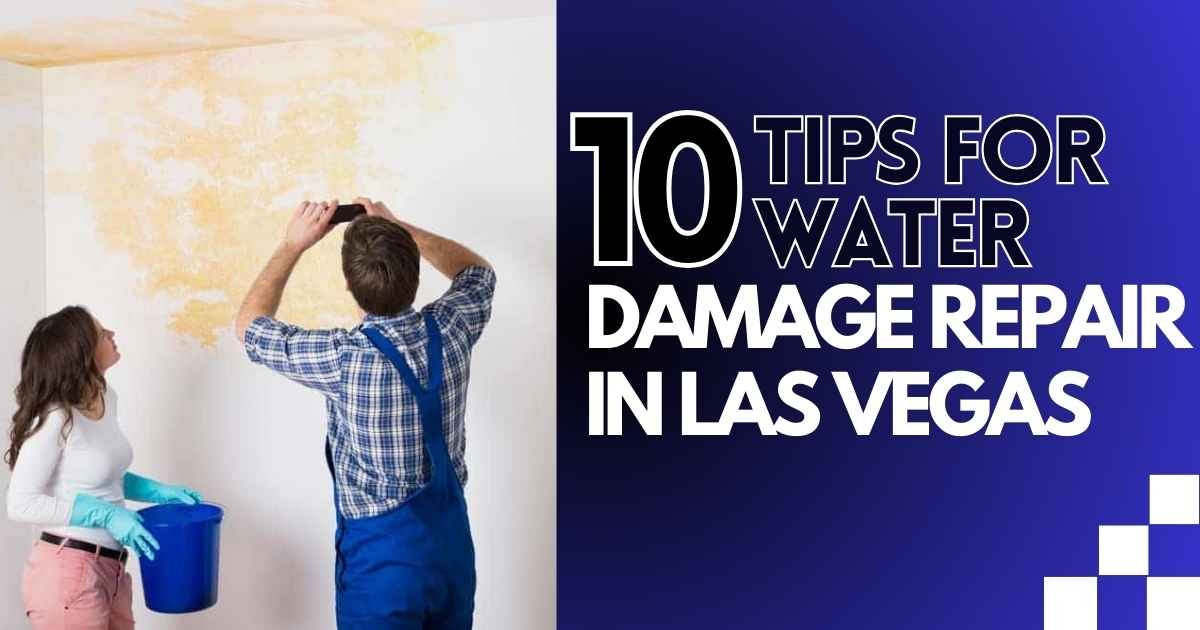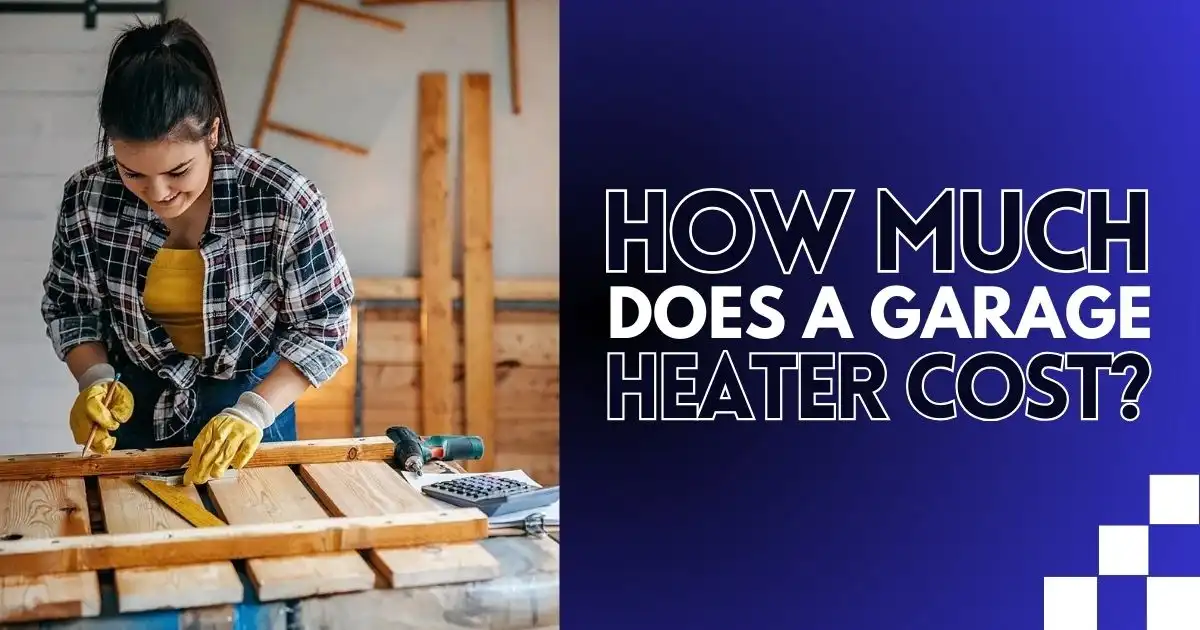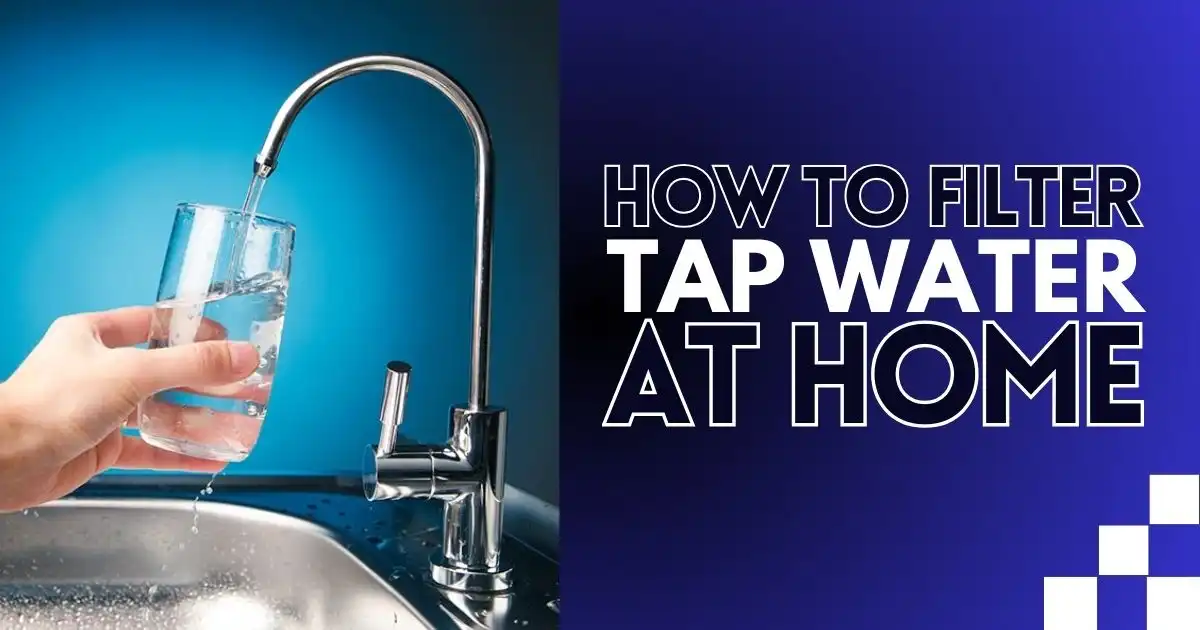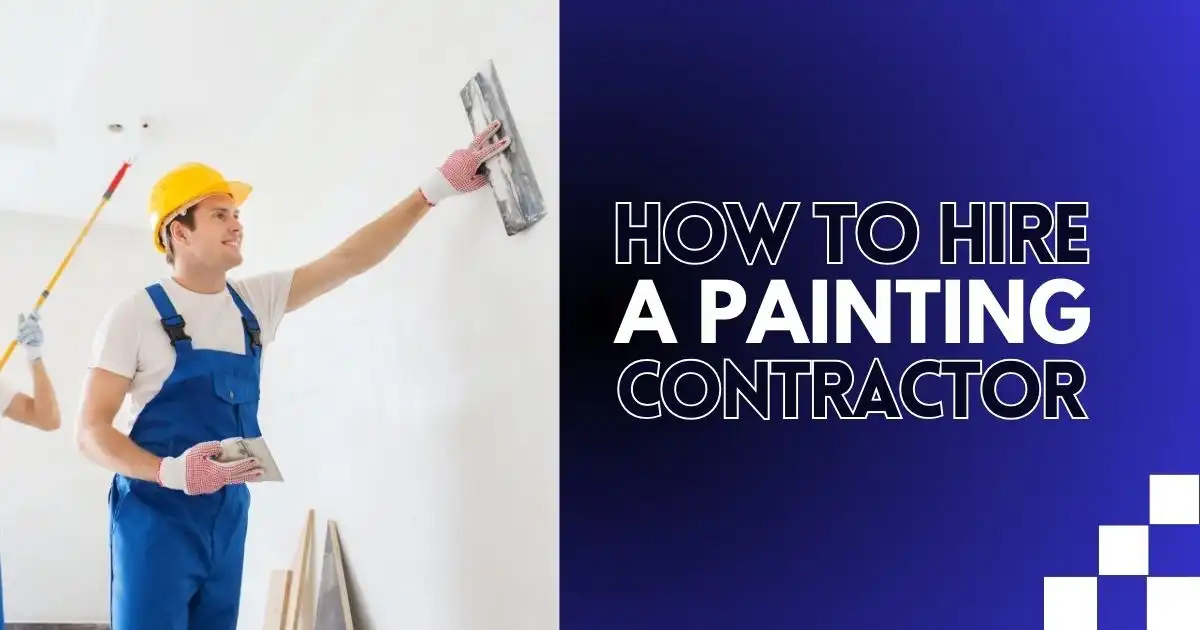Did you know water damage costs homeowners up to $20 billion each year?
From burst pipes to storm floods, excess water is always an unwelcome problem in any home. If you face flooding or water damage, it’s important to act quickly. But don’t worry—just as you wouldn’t leave a leak in your boat unattended, you shouldn’t ignore water damage in your home. With the right steps, you can repair the damage and keep your home afloat.
Why Does Water Damage Happens?
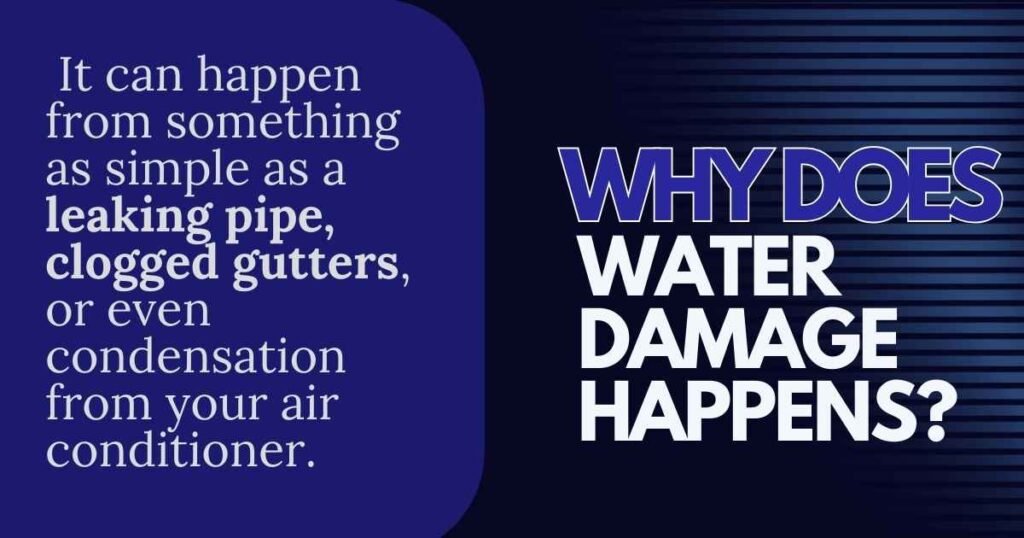
When you think of water damage, you might picture big natural disasters like hurricanes or floods. But it can also happen from something as simple as a leaking pipe, clogged gutters, or even condensation from your air conditioner.
Water damage isn’t something to ignore—it can quickly ruin your home. In just a few hours, it can destroy furniture, warp wood floors, and lead to serious mold and mildew problems.
Identify the Source of Water Damage
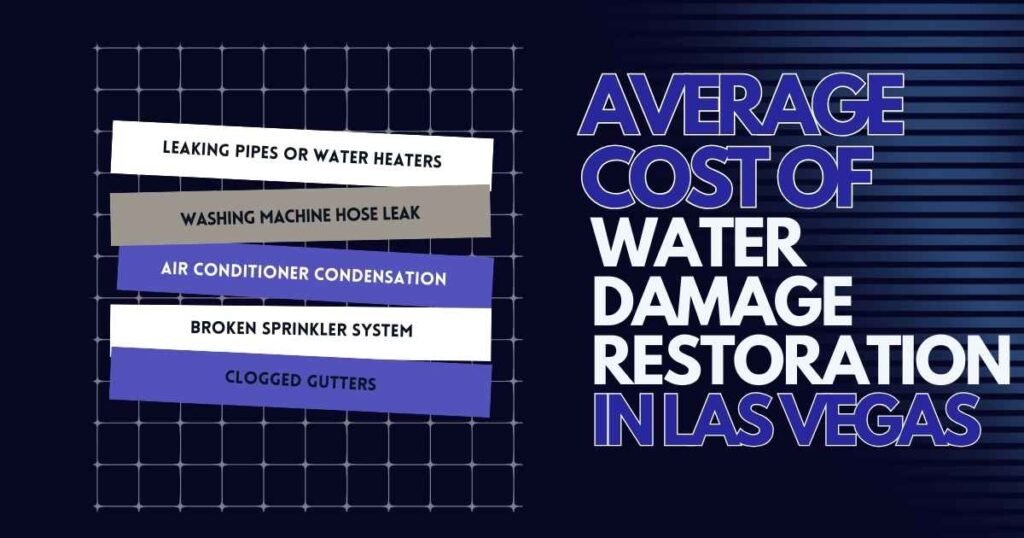
Water damage in homes can happen for many reasons, and identifying the source is important for stopping further damage and starting repairs.
- Leaking Pipes or Water Heaters: Old or damaged pipes can burst or leak, causing water leak damage that spreads through walls, ceilings, or floors. Water heaters can also develop leaks due to rust or age.
- Washing Machine Hose Leak: The hoses that supply water to your washing machine can crack or loosen over time, leading to leaks that can cause significant damage if not caught early.
- Air Conditioner Condensation: Air conditioning units can produce condensation that, if not properly drained, can accumulate and lead to water damage, particularly in attics or basements.
- Broken Sprinkler System: A malfunctioning sprinkler system can cause water to pool around the foundation of your home, leading to seepage and potential damage to your home’s structure.
- Clogged Gutters: When gutters become clogged with leaves and debris, water can overflow and run down the side of your house, leading to foundation issues or leaks in the roof.
Understanding these sources can help you quickly identify the cause of water damage and take steps to repair it before it worsens. Regular maintenance and inspections can also help prevent these issues from occurring in the first place.
10 Tips for Water Damage Repair
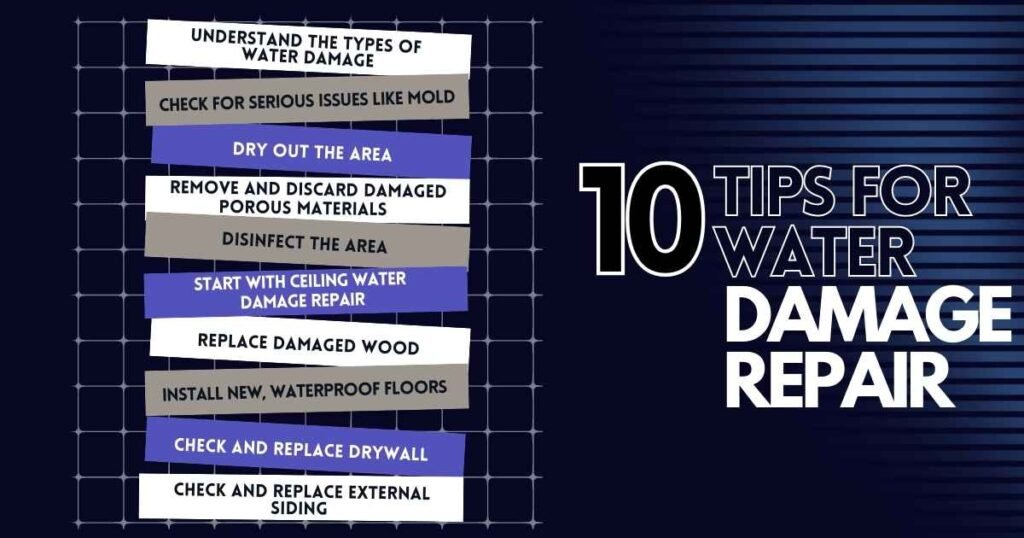
1. Understand the Types of Water Damage
There are three types of water in damage scenarios:
- Clean Water: From rain, leaks, etc. Safe to clean yourself; professional cleanup costs about $3.75 per square foot.
- Gray Water: Slightly dirty, from dishwashers or washing machines. You can clean it with proper gear; it costs $4.50 per square foot for pros.
- Black Water: Highly contaminated, from sewage or severe flooding. Dangerous—always hire professionals; costs $7 per square foot for cleanup.
2. Check for Serious Issues like Mold
Look carefully at damaged areas for signs of mold and mildew. Mold can start growing in as little as 24 hours if the conditions are right. If the issue has been ongoing, like mold from attic condensation, it may have been growing for a while. Mold can be harmful to your health and can seriously damage anything it grows on.
For small mold problems, cut out the affected material, bag it up, and throw it away right away. For bigger mold issues, leave the area, stop any airflow to prevent spreading spores, and call a professional. Remember, mold can hide in places like inside walls or under floors, so you’ll need to keep checking for it as you repair the water damage.
3. Dry Out the Area
It’s important to remove all moisture as quickly as possible to prevent further damage. For small leaks, this might be easy, but make sure you’re thorough. Use fans to circulate air in the affected area. For bigger jobs, consider renting a large dehumidifier to fully dry out the wood, carpet, and other materials. It’s important that no moisture remains after your water damage is repaired.
4. Remove and Discard Damaged Porous Materials
Porous materials like carpet, insulation, fabric, and similar items can be ruined if soaked in water. You might need to cut them out and throw them away because water can permanently damage them, causing shrinking or warping.
Mildew can make the damage even worse. If you have a favorite piece of furniture you want to save, you can try drying it out, but the damage may already be done, especially if you see water damaged drywall. Remember, unsealed cement, drywall, and wood are also porous and can be affected in the same way.
5. Disinfect the Area
After removing any damaged materials, disinfect the entire area before you repair water damage. A bleach solution is a common choice, but there are also other homemade options available. Lightly spray and wipe down the area to ensure no mold spores are left behind before you begin the water damage repair.
6. Start with Ceiling Water Damage Repair
Ceilings hit by water damage are more vulnerable because of gravity; they can sag or even collapse. Begin by removing any damaged ceiling panels or boards. If the leak is from the roof, find the real source of the problem, which might be far from the visible water stain.
While doing this, check for any structural damage to beams or rafters. You might also want to contact professionals to get an estimate for the cost of repairing a water damaged ceiling.
7. Replace Damaged Wood
Any wood that is badly warped, rotting, or has mold or mildew should be replaced. Carefully remove the damaged boards and clean the area underneath before installing new wood. If the wood is part of your home’s structure, be extra cautious during replacement to ensure the structure is properly supported both during and after the repair.
8. Install New, Waterproof Floors
When your floor is water damaged, it’s often easy to spot, with wet carpets or swollen floorboards. If you’re unsure, check right away for moisture trapped underneath. Underlayment and padding are especially prone to water damage and often need to be removed.
This could be a good time to install new, waterproof flooring. Ceramic tile, high-quality vinyl, and some types of engineered wood can protect your floors from future water damage. If a leaky toilet has ruined the floor underneath, you can replace that flooring yourself with these durable options.
9. Check and Replace Drywall
If the drywall has swollen or sagged more than 3/8 of an inch, it’s best to replace the entire sheet. If the damage is less severe, you can cut out and repair just the affected area. Don’t forget to check the insulation behind the drywall for any damage as well.
10. Check and Replace External Siding
Roof issues like ice dams can lead to water damage to your siding. The biggest risk is water getting behind the siding and causing lasting damage to the materials underneath. If this happens, you’ll need to remove or replace the siding quickly to prevent rot. Water can also seep behind faux stone and other exterior walls, so make sure to inspect thoroughly.
Why Choose Vegas Plumbing Pros?

Vegas Plumbing Pros is your go-to choice for expert plumbing services in Las Vegas. With years of experience, they handle everything from routine maintenance to complex repairs, offering reliable, prompt service to minimize disruptions. Their comprehensive services include leak repairs, water damage restoration, and 24/7 emergency support. Known for excellent customer service and transparent pricing, they ensure every job is done right the first time.
Don’t let plumbing issues disrupt your life—trust Vegas Plumbing Pros for dependable, expert service. Contact them today to schedule your service or request emergency assistance.
Swift Action Secures Your Home’s Future
Taking swift action on water damage is like laying a strong foundation for your home’s future—by addressing issues promptly, you prevent further destruction and safeguard your investment. In a city like Las Vegas, where unexpected water damage can strike, it’s essential to act quickly, dry out the area, and repair any damage to maintain the integrity and value of your home.
By following these practical tips, you not only protect your property but also ensure a safe and healthy living environment. In the end, it’s the steps you take now that will preserve your home and peace of mind for years to come.
FAQs
How to fix water damage in your home?
To fix water damage in your home, and ensure effective home damage repair, first, stop the water source, like turning off the main water supply. Then, remove any standing water with a wet/dry vacuum or mop. Dry out the area quickly using fans and open windows to prevent mold. Clean and disinfect the surfaces to remove any bacteria. Finally, repair any damage, like replacing wet drywall or flooring.
How can we reduce water damage?
You can reduce water damage by addressing problems as soon as they happen, such as fixing leaks right away, keeping gutters clean, and ensuring proper drainage around your home. Installing a sump pump in basements and sealing any cracks in the foundation can also help prevent water damage.
How to clean up after water damage?
To repair water damage, start by removing any standing water using pumps or wet/dry vacuums. Next, dry out the affected area with fans and dehumidifiers. Clean and disinfect surfaces with a mix of water and bleach to kill bacteria and prevent mold. Discard any items that cannot be properly cleaned or dried, such as soaked carpets or damaged furniture.
Can water damage be fixed in the house?
Yes, water damage can be fixed in a house. The key is to act quickly to prevent further issues. After stopping the source of the water, dry out the water damaged area, clean up thoroughly, and carry out repairs to fix any structural damage. In some cases, you may need to replace water damaged materials like drywall, flooring, or insulation to fully restore your home.
